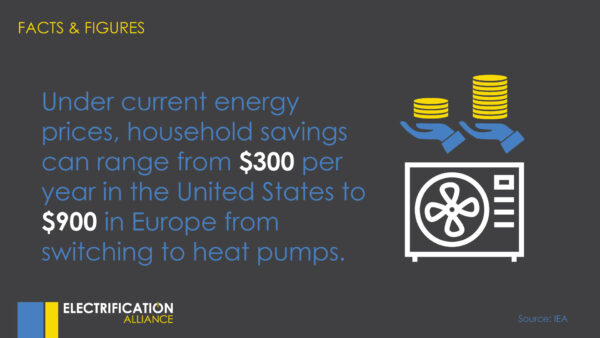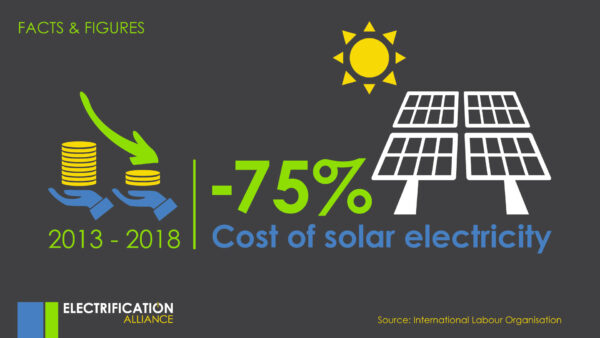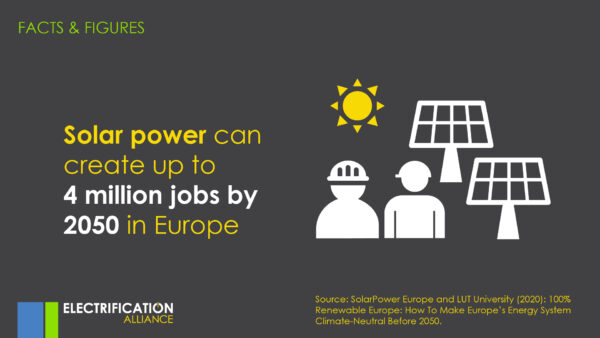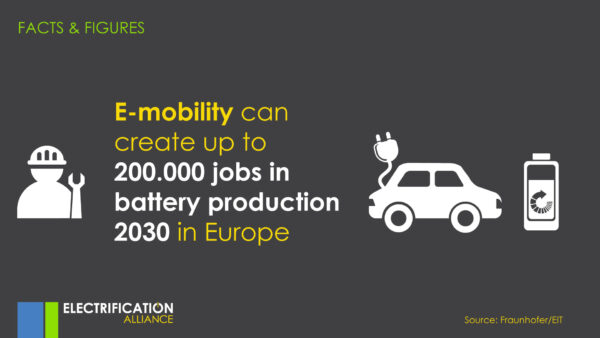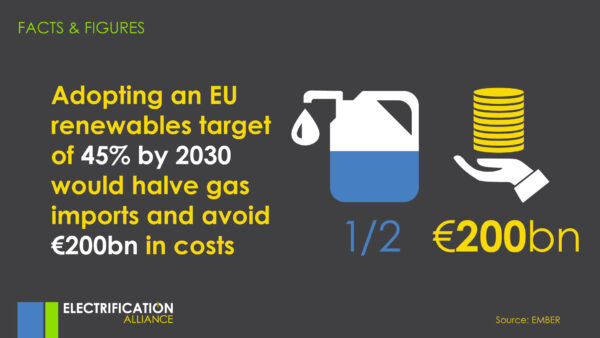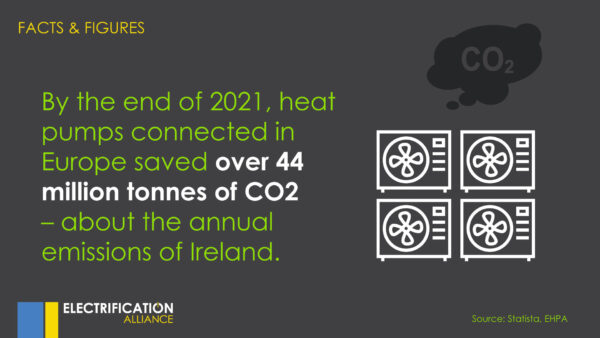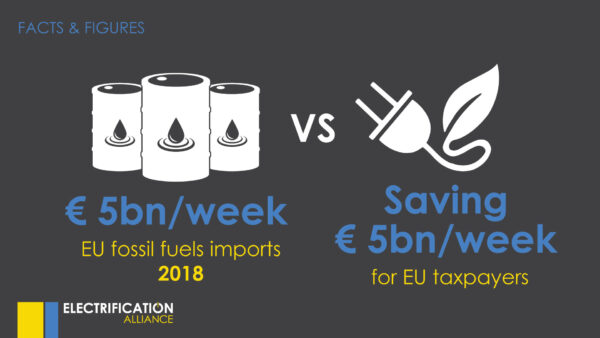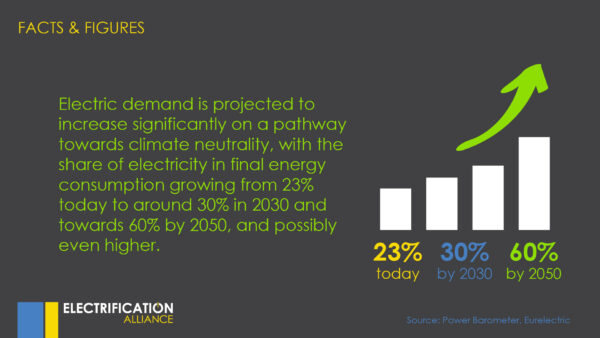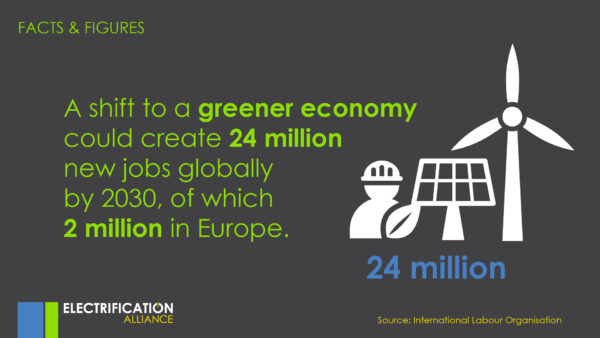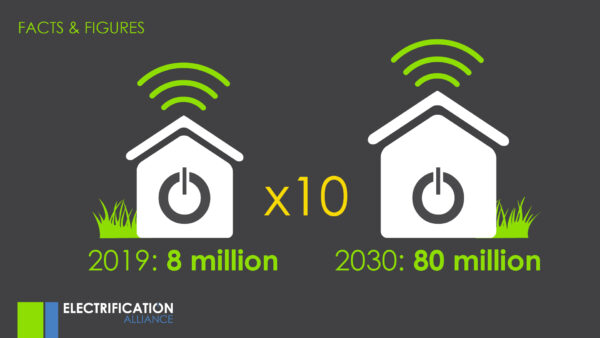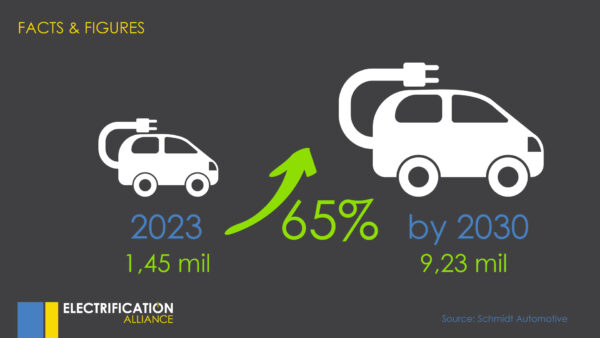Why Electrification?
Electrification is the future of European energy.
Facts and Figures
Today, 24% of Europe’s energy system is electrified. We should reach at least 60% electrification in the EU by 2050 to achieve climate neutrality.
The Electrification Alliance advocates for an increase in clean and renewable-based electrification. We focus on legislative files linked to the European Green Deal, including the Renewable Energy Directive (RED II), the Alternative Fuels Infrastructure Directive (AFID), the Trans-European Networks for Energy Regulation (TEN-E), the Energy Efficiency Directive (EED) and the Energy Performance of Buildings Directive (EPBD).
We want to build a sustainable and resilient economy, create future-proof jobs, reduce greenhouse gas emissions by at least 55% by 2030, support consumer empowerment, and set the EU on a cost-effective track to reach climate neutrality by 2050.
By taking ambitious steps to #ElectrifyNow we can deliver multiple benefits

- Channeling recovery funds towards electrification of transport, heating, cooling, industry will drive Europe’s green recovery.
- Investments in electrification have a proven track record of creating strong economic activity and local job growth.
- Europe’s National Recovery and Resilience Plans should double down on renewables and clean energies as well as on the modernization of existing grid infrastructure.
- Energy imports, mostly fossil fuels, cost European citizens around €150 billion annually. Renewable and clean electricity will improve Europe’s energy security and save costs for consumers.

- Clean and renewable electricity is the cheapest and most efficient way to achieve 55% greenhouse gas emission reduction by 2030 and carbon neutrality by 2050.
- Electrification delivers the best-case scenario for Europe: decarbonization of transport, industry, and heating & cooling, as well as climate and technological leadership.
- Replacing fossil fuels in transport, industry and buildings with renewable and clean electricity reduces air pollution and the associated health risks.
- Electrifying transport in large urban environments would decrease premature deaths caused by air pollution
- We need the right infrastructure in place: modernized and expanded electricity grids as well as demand-side flexibility sources such as smart charging and storage systems.

- Direct electrification drives energy efficiency. It delivers decarbonization with less energy input than any other solutions.
- Synergies with digitalization will empower consumers by allowing them to take a more active role in managing their energy consumption. They provide flexibility, saving costs both for consumers and the overall system.
- Electrification creates new business models. Europe can become a global champion for innovative and digital demand-side management services and storage solutions.

- Electrification creates new, sustainable and qualified jobs in Europe.
- These are often jobs in rural, coastal, or deprived areas that empower local communities with new skill sets and create new revenues for municipalities.
